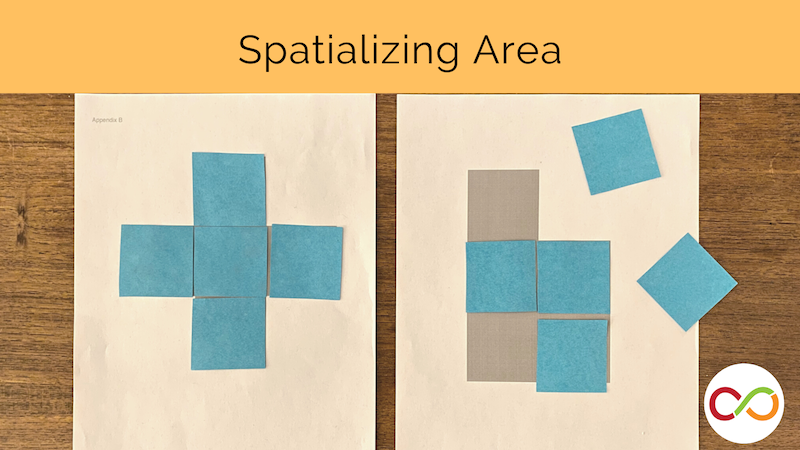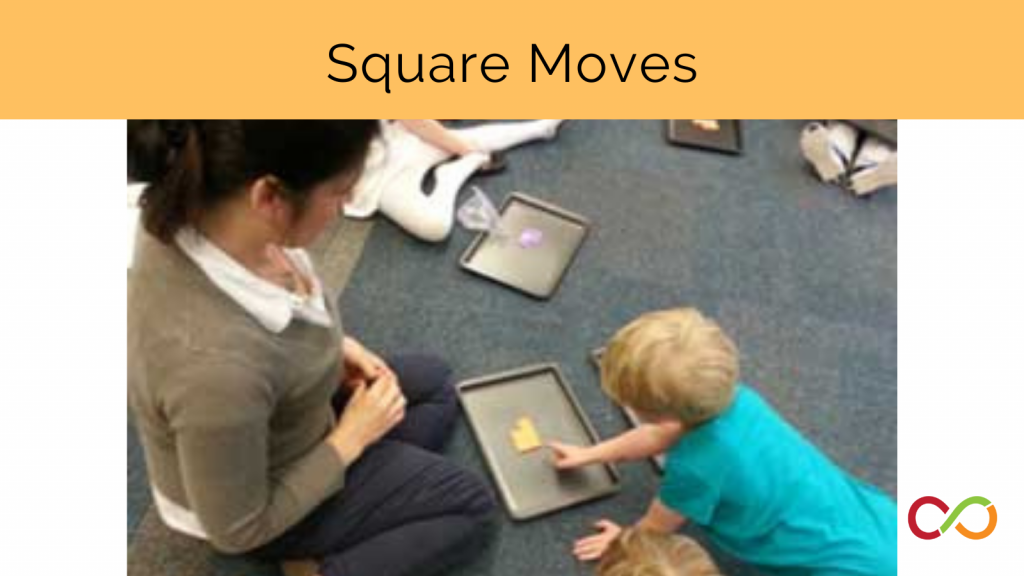Area and Perimeter
Primary/Junior (Age 6 – 12)
Curriculum Goal
Primary: Measurement
- Use appropriate units of length to estimate, measure, and compare the perimeters of polygons and curved shapes, and construct polygons with a given perimeter.
Primary: Number Sense
- Represent and solve problems involving the addition and subtraction of whole numbers that add up to no more than 1000, using various tools and algorithms.
- Use mental math strategies, including estimation, to add and subtract whole numbers that add up to no more than 20.
Junior: Geometry and Spatial Sense/Measurement
- Use appropriate metric units to estimate and measure length, area, mass, and capacity.
Context
- Students will work in pairs.
- Students should have prior experience creating shapes when given a set perimeter and area.
Materials
- Two 15×15 grids per student (Appendix A)
- Markers
- Two dice per pair of students
Lesson
Round 1: Perimeter
- Each student will work on their own 15×15 grid (Appendix A). The goal of round one is to surround as many 1×1 grid squares as possible.
- Player 1 will roll both dice and determine their sum. The player will draw a shape on the board so that the length of the perimeter is equivalent to the sum of the dice.
- If the sum of the dice is equal to two, the player misses their turn.
- If the sum of the dice is odd, a triangle can be formed inside the 1×1 box on a diagonal.
- Player 2 will take their first turn.
- Now that each player has drawn their first shape on the grid, they must build off these shapes: only the vertices of the shapes drawn in subsequent turns can touch.
- Players take turns rolling the dice and drawing shapes on their own grid paper. Play continues until each player has rolled 15 times. Players can keep track of the rounds by keeping a tally on a separate sheet.
- For every 1×1 grid square surrounded, a point is gained.
- Each player records how many points they receive beneath the grid.
- As an additional challenge, suggest students record the perimeter and area of the shapes they made, in the appropriate metric units of measurement.
Round 2: Area
- Each player will work on a new 15×15 grid.
- The goal is to cover the entire grid, leaving as few spaces as possible.
- The numbers on the dice now represent area.
- Rolling a two no longer means missing a turn.
- Shapes can be placed wherever the student wishes. Player 1 will roll both dice.
- On the grid, Player 1 will draw a shape with an area that is equivalent to the sum of the numbers on the dice.
- Players take turns rolling the dice and drawing shapes on their own grid paper.
- When students roll twice in a row and are unable to fill in any more squares, the round is over.
- Every square left blank results in the deduction of one point. Each player records their score below the grid.
- Calculate the total points between the two rounds by adding the two rounds together. Use the concept of integers to add negative and positive whole numbers.
- The player with the greater number of points wins.
- As an additional challenge, students can record the perimeter of the shapes they made, in the correct metric units of measurement.
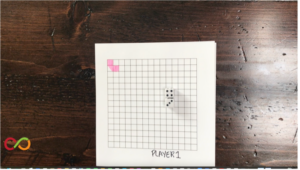
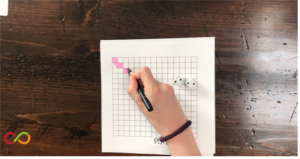
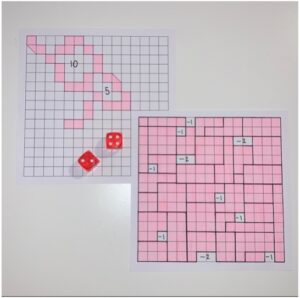
Look Fors
- Do students recognize shapes can have similar area and perimeters, yet look very different?
- Are students comprehending that they can create triangles when rolling an odd number?
- Are the shapes created consistent with the perimeter or area rolled?
Extension
- Use additional dice to explore shapes with greater perimeters and areas.
- Limit the shapes that may be drawn. For example, players may only draw triangles.
- If players roll doubles, they can double the perimeter or area of the sum on the dice.
- Have students collaborate by taking turns to work on the same grid.
- Have students collaborate by using separate grids but using the same dice roll.
Created by Laura Inkila. Adapted by The Robertson Program.
Share this lesson
Share on facebook
Share on twitter
Share on email

